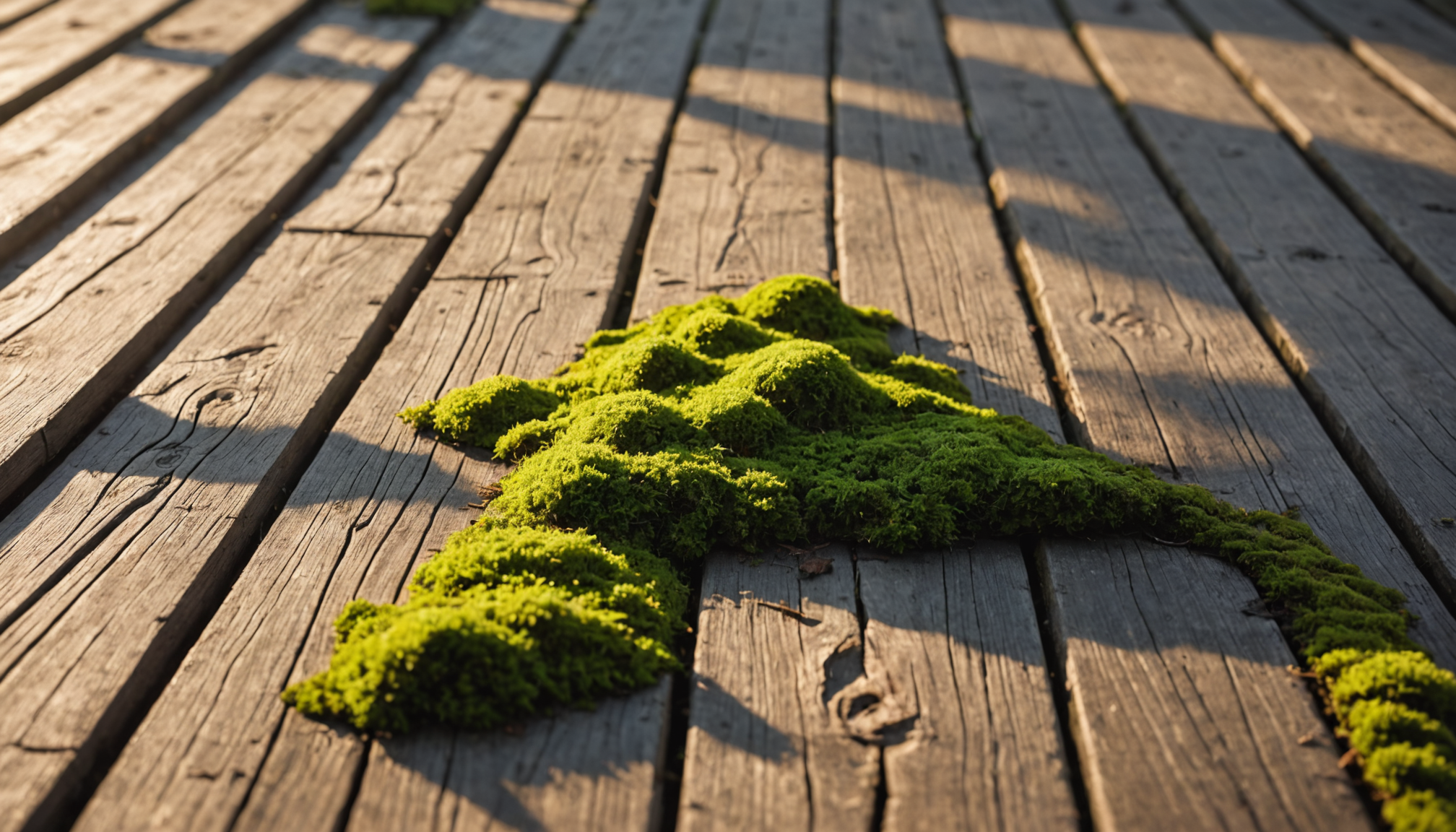Before you begin the process of cleaning your porch, it’s crucial to assess its current condition. This assessment will guide you in determining the appropriate cleaning methods and materials necessary for the job, ensuring both effectiveness and safety during the process.
Start by taking a moment to walk around your porch, with a keen eye for details that might usually go unnoticed in daily life. Check for any physical damage, such as cracks in the flooring, loose boards or railings, and signs of wear or rot. These not only detract from the aesthetic appeal of your porch but could potentially compromise its structural integrity, leading to safety hazards. Addressing these issues beforehand is an essential investment in maintaining the longevity and safety of your outdoor space.
Next, evaluate the level of dirt, grime, and stain presence that need addressing. This can differ vastly depending on geographical location, weather conditions, and how often the porch is used. For a comprehensive examination, scrutinize various components of the porch structure:
- Flooring: Look for dirt accumulation in the grooves or joints of the flooring material. Wooden surfaces might harbor mold or moss, especially in shaded areas. Concrete floors, on the other hand, could show signs of staining from algae or oil spills.
- Railings and Bannisters: These areas can be hotspots for dirt and require a careful check for stability as well as cleanliness. Rust can also be a concern if metal is part of the railing structure.
- Ceiling and Roofing: Spiders, wasps, and other insects often make their homes here, which means cobwebs and nests are common. Look for water damage or peeling paint as well.
It’s also prudent to inspect for any presence of pests or nests that could complicate the cleaning process. Birds’ nests, for instance, should be carefully managed according to local wildlife regulations.
Once this initial assessment is complete, create a checklist of the areas and issues identified. Prioritizing these concerns will aid in selecting specific cleaning products and techniques for each surface, ensuring a thorough and effective deep clean of your porch. Below is a table to assist you in comparing common concerns during an assessment and their implications.
| Concern | Implications |
| Loose boards | Safety risk; potential for injury if not fixed |
| Mold on wood | Decay and aesthetic damage; requires specialized cleaning |
| Rust on metal | Compromised structural integrity; can lead to corrosion |
| Stains on concrete | May require pressure washing or specific cleaning agents |
This preparatory step may remind you of the meticulous nature of cleaning other areas in your home, like a bathroom, where attention to detail and a strategic approach yield the best results. By thoroughly assessing your porch’s condition, you set the stage for not only a cleaner, more welcoming space but also a safer one that can be enjoyed throughout the seasons.
gathering essential cleaning supplies
As you prepare to clean your porch, gathering the right cleaning supplies is essential to ensure efficiency and effectiveness. Having everything you need at your fingertips will make the process smoother and more manageable. Here’s a step-by-step guide to gathering the essential cleaning supplies for a successful porch cleaning:
-
General Cleaning Supplies:
- Broom and Dustpan: A sturdy outdoor broom is indispensable for sweeping away loose dirt, leaves, and debris before you start scrubbing.
- Garden Hose: Necessary for rinsing down surfaces. Ensure it’s long enough to reach every corner of your porch comfortably.
- Bucket: Use this to mix cleaning solutions and transfer water easily to areas that a hose cannot reach or in places where a controlled amount of liquid is needed.
-
Cleaning Solutions and Agents:
- All-Purpose Cleaner or Soap: Ideal for general cleaning, check if your cleaner is suitable for a variety of materials like wood, vinyl, and metal.
- Deck or Wood Cleaner: If your porch features wooden elements, these specialized cleaners can help safely remove mold and mildew.
- Concrete Cleaner: For concrete surfaces, opting for a solution specifically designed to tackle oil stains, algae, and grime will yield better results.
- Vinegar and Baking Soda: Natural alternatives that work exceptionally well on many surfaces to lift stains without harsh chemicals.
-
Tools and Equipment:
- Scrub Brushes: Different sizes and strengths are advisable. Use softer brushes for delicate surfaces and tougher ones for resilient materials like concrete.
- Pressure Washer (optional): If available, a pressure washer can make short work of stubborn grime and is especially useful for cleaning large areas quickly.
- Spray Bottles: Handy for applying cleaning solutions without using too much product.
- Garden Sprayer: Ideal for applying moss or mold treatment solutions evenly.
-
Protection Gear:
- Gloves: Protect your hands from harsh chemicals and give you a better grip on tools.
- Safety Goggles: Essential when handling cleaners and using equipment like pressure washers to prevent eye injuries.
- Knee Pads: Consider these if you’ll be on your knees for an extended period while tackling different nooks and crannies.
Having this assembly of essential supplies and protective gear is not just an investment in a clean and welcoming porch, but also an important aspect of maintaining your safety and comfort during the cleaning process. Remember, using the right materials not only safeguards your health but also protects the structural integrity and appearance of your porch, ensuring it remains a beautiful and functional part of your home for years to come.
tackling different materials
When it comes to cleaning your porch, understanding how to approach different materials is crucial. Each surface type demands specific methods and products to ensure a thorough cleaning without causing damage. Let’s explore strategies for handling various common porch materials, safeguarding your investment in a beautiful outdoor space.
Wood: This classic material, although aesthetically pleasing, requires careful maintenance. Begin by sweeping the wood surface to remove any loose debris. Follow with a gentle wood-specific cleaner that will lift dirt without harming the natural fibers. If you notice areas with mold or mildew, a mixture of vinegar and water can effectively clean these spots. For a deeper clean, consider using a pressure washer on the lowest setting, but maintain a safe distance to avoid splintering the wood. Seal the wood afterward to protect against future damage and enhance its longevity.
Concrete: Durable and versatile, concrete porches can accumulate stains from moisture, leaves, and other organic materials. Start with a broom to remove loose dirt. Then, use a pressure washer to tackle stubborn grime, or if not available, employ a stiff-bristled brush with a concrete cleaner to scrub away spots. For oil stains, try a degreaser specifically designed for concrete. Ensuring a clean concrete surface not only enhances its appearance but also prevents slipping hazards, enhancing safety for everyone who uses the porch.
Metal (Railings and Furniture): Metal structures and furnishings often face rust and buildup from weather exposure. Start by wiping these surfaces with a damp cloth to remove superficial dirt. If rust is present, a wire brush or sandpaper can be used to gently buff away the corrosion. Follow up with a metal cleaner or a mixture of baking soda and water. Apply a protective spray to prevent future rusting and maintain the polished look.
Composite: Generally more forgiving, composite materials are resistant to mold and fading, but they still require upkeep. Clean with a mild soap or an all-purpose cleaner and a soft brush. Avoid harsh chemicals which might degrade the material over time. Composite materials promise durability, and regular maintenance will keep them looking their best year-round.
Tackling these distinct materials with the appropriate approach is as important as cleaning any intricate area in your home, such as a bathroom or kitchen. Implementing the right techniques can not only rejuvenate your porch but also ensure its safety and enjoyment. With consistent care, your porch can serve as a delightful extension of your living space, providing relaxation and enjoyment for years to come.
dealing with tough stains
Tough stains on your porch can often feel like an overwhelming challenge, but with the right techniques and persistence, even the most stubborn marks can be dealt with effectively. Identifying the type of stain is the first step in determining the best course of action. Consider common offending substances, like rust, mildew, or oil, and decide on a tailored approach to tackle each one.
For rust stains, which are common on metal fixtures and can leach onto nearby surfaces, start by using a wire brush to gently scrub the area. If the stain persists, try applying a commercial rust remover according to the product’s instructions. Alternatively, a homemade paste of baking soda and water, combined with the acidity of vinegar, can also be effective. Apply the paste to the stain, allow it to sit for about 30 minutes, and then scrub thoroughly with a bristle brush.
Mildew and mold are not just unsightly; they can pose a health risk, much like a moldy bathroom. To remove them from porous materials, such as wood or composite, a solution of vinegar and water is typically effective. Spray the solution onto the affected area and let it sit for an hour. Scrub with a brush, rinse well, and if necessary, repeat the process. In cases where mildew has set in deeper, consider using a bleach solution, particularly for concrete surfaces, while ensuring proper ventilation and protective gear for safety.
Oil stains from grills or vehicles can be particularly tenacious. Begin by blotting any excess oil with a paper towel or absorbent cloth. Apply a commercial degreaser or a mixture of liquid dish soap and warm water directly onto the stain, allowing it to penetrate for at least 15 minutes. Scrub the area vigorously with a stiff brush, ideally one designed for heavy-duty cleaning. Rinse thoroughly with a hose or wipe with a clean, damp cloth. For older stains, clay-based cat litter left overnight can also help absorb some of the remaining oil.
Persistent organic stains, such as those from leaves or plant matter, can sometimes require an enzymatic cleaner or oxygen bleach, which is less harsh than chlorine bleach and environmentally friendly. Apply it to the stain, agitate gently with a brush, and let it dwell as per the manufacturer’s instructions, then rinse thoroughly.
Staying proactive about stain removal not only keeps your porch looking inviting but also contributes to the longevity of the materials, underscoring your investment in maintaining an enjoyable and safe outdoor space. Just like with any meticulously kept area of your home, such as your kitchen or bathroom, attention to stain detail is what sets the foundation for a clean and hospitable environment. Regularly inspecting your porch for new stains and addressing them promptly can minimize the effort needed for deep cleaning sessions, allowing you to enjoy a porch that’s as welcoming as it is beautiful.
maintaining your porch regularly
Regular maintenance is key to preserving the beauty and functionality of your porch. Establishing a routine that suits your schedule and environment will ensure your porch remains an inviting and safe space for everyone. Begin by setting a bi-weekly cleaning schedule for general tidying up. This includes sweeping away debris, hosing down surfaces to remove dust and pollen, and wiping down railings and furniture to prevent dirt buildup. Keeping the floor clear of wet leaves and debris not only maintains the clean appearance of your porch but also reduces the risk of slips and falls.
As you would in a bathroom, pay attention to potential moisture problems. Water exposure can lead to mold and mildew, which not only mars the appearance of your porch but also presents health risks. In high humidity areas, a dehumidifier or ensuring proper drainage can make a significant impact. Regular inspection of sealants and finishes is vital; reseal wooden surfaces annually to protect against moisture and wear. Keeping up with these tasks preserves the material’s integrity and prolongs the life of your porch.
Additionally, regularly inspect for signs of damage or wear, such as loose tiles, cracked planks, or rusty spots on metal. Address these issues promptly to prevent them from evolving into more significant problems that could compromise your porch’s structural safety. By incorporating small yet consistent maintenance practices into your lifestyle, your porch will remain a sanctuary of relaxation and a valuable investment in your home.
In conclusion, maintaining a clean and safe porch requires regular attention and care, much like the upkeep of any beloved area in your home, such as the bathroom or kitchen. With the right assessment, tools, and methods, you can effectively tackle the challenges of cleaning diverse materials and stubborn stains. By committing to a routine maintenance plan, you ensure the aesthetics and safety of your porch, thereby protecting your investment and enhancing your enjoyment of this valuable outdoor space for years to come.


